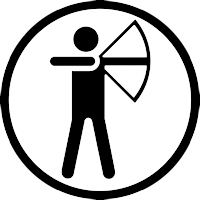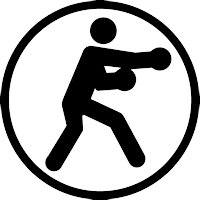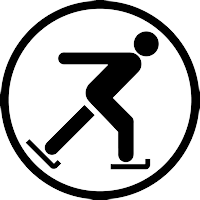Q
"When is it time to buy new archery equipment?"
A
Well, it varies for many people.
#1. Can you afford it in your budget?
Not everyone can afford to be buying 1 or 2 new bows (or more!) every year. *Cough Cough* as I glance at the bows in the basement that require a new bow rack on the wall so I can store them properly.
Some of us (eg. actors seeking to expand their skill sets that they can put on a resume) can even claim things like riding lessons and anything related to owning a horse as a business expense on their taxes because they want to star in a Western someday. Or a fantasy film, or a historical film, or a post apocalyptic film featuring horses... Basically any film with horses.
Likewise an actor could in theory claim their archery expenses as business expenses, as I am sure William Shatner did during the early days of his acting career.
But not all of us can do that and thus we also have to weigh whatever financial pressures we are facing against our thirst to go buy more and more archery equipment.
So let's pretend that money is not the issue...
#2. Do you want a stronger bow?
Some archers (usually men) want a stronger bow because they want to be able to go hunting someday, or perhaps they just want their arrows to fly faster, or perhaps they just want to get more exercise by pulling a harder bow.
For whatever the reason I recommend waiting at least 6 to 12 months after you purchased your first bow before you go and buy your second bow. Why? Because hopefully during that 6 to 12 month period you went out and practiced with the first bow at least once per week (or sometimes twice). So at least 24 or even 48 times.
After that much practice the archer then might be ready for a higher poundage, at which point they should consider getting a bow which is 5 to 6 lbs heavier.
Thus if you started off with a 24 or 25 lb recurve it would now be time to consider getting a 30 lb bow.
Or if your bow is a three-piece recurve bow, well then you could just buy bow limbs that are 5-6 lbs heavier.
Why should you not make bigger jumps? Like 10 lbs or more? Because it is a bit like dumbbells at the gym. You start with the 10 lb dumbbells and repeat that for a few months and then switch to 15 lbs. Then 20, then 25, then 30. You take your time doing it and focus on your form.
If you skip ahead a person's form will frequently suffer, you lose accuracy, you stop making progress with respect to the quality of your form, and such inaccuracy effects your mental confidence. You stop shooting because you think you suck at the sport... But in reality you just pushed yourself too quickly.
Personal Note - I go through this process every Spring. I start by shooting my lighter bows and then practice with them slowly, rebuilding any strength I lost during the Winter. I gradually build up my strength until I am used to shooting 35, 40, 45, 50, 55 or even 60 lbs.
#3. Do you want a prettier bow?
This is certainly a thing. Some archers just want a bow that looks really nice. There are some very pretty bows out there. But here's an interesting rule when it comes to price, prettiness and accuracy.
- If a bow is both pretty and accurate, it will also be pretty expensive.
- If a bow is both accurate and inexpensive, it will be "meh okay" to look at.
And nobody wants to buy a bow that is pretty and cheap, because guaranteed it won't be accurate.
Take for example the bow below... It is a Blacktail Elite VL Series bow... It is currently priced at $1470 USD. It is a very pretty bow and suitably accurate when you consider the price tag, but most of what you are paying for is the looks.
This is actually one of their less expensive bows too. They have other
bows from their Legacy series which are priced at $4500, $6500 and $8999
USD.
So yes, you can buy super expensive bows it you really want - bows that are essentially more art piece than craft, but would you really want to shoot that bow regularly or take it hunting???
My advice for anyone who is new to archery is that you should aim smaller when it comes to buying a prettier bow. Something in the $400 to $800 range is still a very pretty bow, but you won't need to get financing just to buy it. (Seriously, Blacktail Bows offers financing on their website...)
#4. Do you want to collect archery equipment?
Yes? Awesome.
Most collectors however are not buying "new archery equipment". They're buying vintage. Specifically they are looking for bows that are 40 or more years old. So right now that means anything from the 1970s or earlier.
It also means you are usually browsing bows on eBay or similar websites where people auction off old vintage bows.
When buying such bows you want to look carefully at the photographs being offered. There should be photographs of every part of the bow, and from every angle. Usually that means 16 or more photographs, in high resolution, with no blurry photography.
#5. Do you need new arrows?
Honestly this is the most common reason people buy new archery equipment.
Usually it means they have:
- Broken most of their arrows beyond repair.
- Damaged most of their arrows (and they need repairs).
- Lost most of their arrows.
- Combinations of reasons 1, 2 & 3.
Now if you are just dealing with damaged arrows that could be repaired, then absolutely, you should learn how to repair them. You can buy replacement nocks, replacement fletching, replacement inserts, replacement arrowheads... Modern arrows are rather like Lego. Most of the parts are interchangeable and can be replaced.
If they are broken beyond repair / lost, well... Yeah, not much you can do about that. Time to buy new arrows!
#6. Did you break your bow?
Breaking a bow is a very rare occurrence. Extremely rare. Most modern bows are very durable if you take good care of them and are not mistreating them, and the rare manufacturing defects are quite rare.
If it was a manufacturing defect you should check your warranty and see about getting a replacement from the manufacturer. If you don't have a warranty... Well then, you need to buy a new bow.
I definitely recommend buying a bow that comes with a warranty. You never regret it.
Note - Vintage bows definitely do not come with a warranty. Likewise certain cheaper companies don't offer warranties at all. Likewise, there is also the problem of counterfeits - you send the broken bow back to the manufacturer and then they inform you that your bow is a counterfeit, and thus there is no warranty. (Counterfeits are more often purchased online during some kind of sale or discount, so you need to beware of any company selling bows online at large discounts.)
#7. Do you want to try a different style of archery?
One of these days I am going to buy a Japanese yumi bow. It is on my Wish List of bows to buy, but it might be a few years before I do that.
Wanting to try different styles of archery is just something that many people want to do, so you're not alone in this desire. The problem is that certain styles of archery are more expensive, and learning the different style of archery is also an issue.
Eg. When learning a new style you should probably get archery lessons in that specific style.
So yes, if your goal is to try a different style then you should get lessons in that style, and presumably your archery instructor can give you advice about what kind of bows you can purchase, what other archery equipment you will need, where to purchase, anything else you should know, etc.
And if you live in Toronto and want to learn one of the five styles of archery then you should contact me to get archery lessons, because I teach all 5 major styles of archery.
- Traditional Recurve
- Olympic Recurve
- Longbow / Flatbow
- Horsebow / Shortbow
- Compound Bow
#8. Accessories and issues...
Wear and tear is a thing. Take for example the common three finger glove used by traditional recurve and longbow archers. Made from rawhide (usually) they eventually wear down and stop offering you protection from the bowstring. When you start experiencing this you need to buy a new archery glove.
Same thing happens with bowstrings. You can maintain them as best you can by waxing them, taking good care of them, but eventually you will need to reserve them if they unravel or replace them when they break.
Your gear will wear down and/or break over time and certain things will need replacing. My recommendation whenever replacing an item is to try and replace it with something that is better quality / more durable that will last longer.
Eg. When replacing a plastic arrow rest aim to replace it with either a traditional fur arrow rest, or with a wire arrow rest. Fur or metal will last a lot longer than plastic.
Personal Note - I once bought a plastic arrow rest back in 2010 that broke on the first day. Complete trash. I will never buy another plastic arrow rest.
Additional Note - I routinely see plastic arrow rests on the ground at the archery range. Not broken ones necessarily. Some of them look to be brand new. But this is the inherent problem with them. They're so bad (and people know they're bad) that people are just littering with them.
#9. Did I miss anything?
When in doubt ask yourself the following question: "Do I need this new piece of equipment?"
If you're talking about buying an armguard because you keep hitting yourself, then the answer is probably yes.
But if you are thinking of buying a new armguard just because it is pretty, and you already own 3 other armguards... The answer is no.
But hey! Maybe you are collecting armguards, in which case that is your hobby and who am I to throw stones? I have 30+ bows in the basement that need a new bow rack...

























